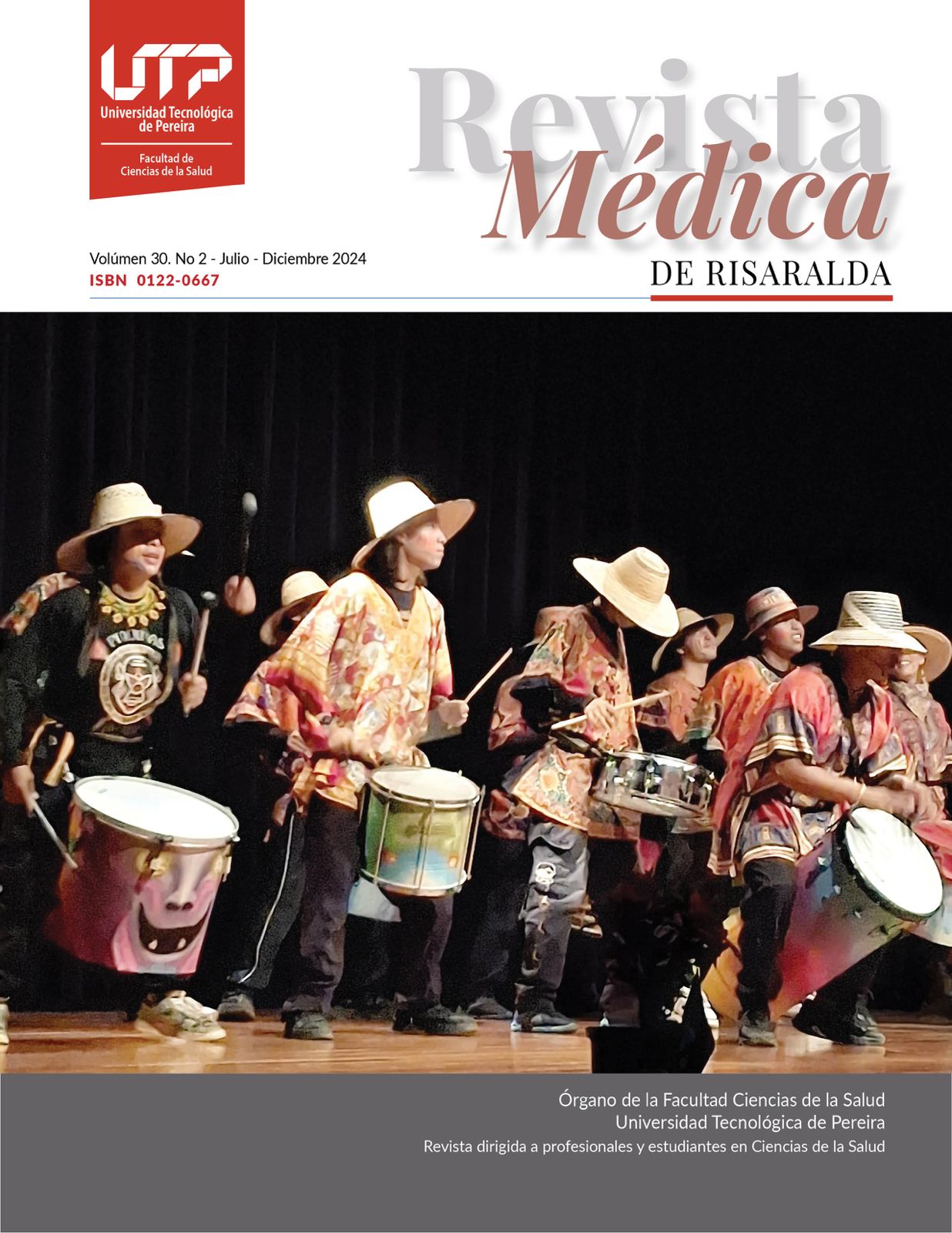Factores personales y familiares asociados a hipercolesterolemia en docentes de colegios públicos peruanos mediante regresión logística binaria
DOI:
https://doi.org/10.22517/25395203.25380Palabras clave:
Hipercolesterolemia, Estructura familiar, Maestros, Modelos logísticos, Distribución de Chi-CuadradoResumen
Objetivo: determinar los factores personales relacionados con la hipercolesterolemia en docentes de colegios públicos peruanos.
Metodología: estudio descriptivo, basado en datos secundarios procedentes de la encuesta nacional docente del año 2021 realizada a 12075 profesores de los cuales 546 refirieron haber sido diagnosticados de hipercolesterolemia el último año. La variable dependiente fue la presencia de hipercolesterolemia en los últimos 12 meses, las variables independientes fueron: edad, sexo, sobrepeso, familiar con quien vive que renunció al empleo, familiar que abandonó los estudios, familiar que se mudó del hogar, cuidar de adultos mayores, cuidar de parientes enfermos crónicos, tipo de régimen laboral. Se realizó la prueba de Chi-cuadrado de Pearson, así como las pruebas de regresión lineal bivariada la cual incluyó la prueba de Cox y Shell, el R cuadrado de Nagelkerke y la prueba ómnibus.
Resultados: se encontró que los factores personales que predijeron la hipercolesterolemia fueron: la edad, familiar cercano que se mudó recientemente, familiar que abandonó los estudios, cuidar a familiar con enfermedades crónicas, docente que cuida de familiar adulto mayor, el tipo de régimen laboral, sobrepeso.
Conclusiones: factores personales están asociados a la hipercolesterolemia en docentes de colegios públicos peruanos. El estado, además de la proporción de campañas de despistaje de dislipidemias, debe proporcionar servicios de apoyo psicológico y familiar en profesores de escuelas a nivel nacional.
Descargas
Citas
Ibrahim MA, Asuka E, Jialal I. Hipercolesterolemia [Internet]. Publicación de StatPearls; 2023 [citado el 19 de junio de 2023]. Disponible en: https://www.ncbi.nlm.nih.gov/books/NBK459188/
Chang Calderín O, Figueredo Villa K, Murillo Pulgar TJ. Hipercolesterolemia en el adulto mayor. Rev Cuba Med Gen Integral [Internet]. 2020 [citado el 19 de junio de 2023];36(3). Disponible en: http://scielo.sld.cu/scielo.php?script=sci_arttext&pid=S0864-21252020000300011
Guijarro C, Cosín-Sales J. Colesterol LDL y aterosclerosis: La evidencia. Clin Investig Arterioscler [Internet]. 2021;33 Suplemento 1:25–32. Disponible en: https://www.sciencedirect.com/science/article/pii/S021491682100005X
HuffT, Boyd B, Jialal I. Physiology, Cholesterol [Internet]. StatPearls Publishing; 2023 [citado 19 de junio de 2023]. Disponible en: https://www.ncbi.nlm.nih.gov/books/NBK470561/
Bazán N, Echandía N, Gatica M, Laiño F, Valenti C. Niveles de actividad física y sedentarismo en personal de la salud. Rev Fac Cs Méd UNR [Internet]. 2021 [citado 19 de junio de 2023];1:122–9. Disponible en: https://fcmcientifica.unr.edu.ar/index.php/revista/article/view/28
Al-Zahrani J, Shubair MM, Al-Ghamdi S, Alrasheed AA, Alduraywish AA, Alreshidi FS, et al. The prevalence of hypercholesterolemia and associated risk factors in Al-Kharj population, Saudi Arabia: a cross-sectional survey. BMC Cardiovasc Disord [Internet]. 2021;21(1):22. Disponible en: http://dx.doi.org/10.1186/s12872-020-01825-2
Vega A, Alejandra S. Prevalencia de dislipidemias en pacientes de un policlínico de LimaPerú, antes y durante la pandemia por Covid-19 [Internet]. Universidad Nacional Federico Villarreal; 2022 [citado 19 de junio de 2023]. Disponible en: https://repositorio.unfv.edu.pe/handle/20.500.13084/6407
Hackam DG, Hegele RA. Cholesterol lowering and prevention of stroke: An overview. Stroke [Internet]. 2019;50(2):537–41. Disponible en: http://dx.doi.org/10.1161/STROKEAHA.118.023167
Robinson LE, Valido A, Drescher A, Woolweaver AB, Espelage DL, LoMurray S, et al. Teachers, stress, and the COVID-19 pandemic: A qualitative analysis. School Ment Health [Internet]. 2023;15(1):78–89. Disponible en: http://dx.doi.org/10.1007/s12310-022-09533-2
Kumari J, Kumar J. Influence of motivation on teachers’ job performance. Humanit Soc Sci Commun [Internet]. 2023 [citado 19 de junio de 2023];10(1):1–11. Disponible en: https://www.nature.com/articles/s41599-023-01662-6
Kropáč J, Buchtová T, Chudý Š. The new teacher and discipline factors. Cogent Educ [Internet]. 2023;10(1). Disponible en: http://dx.doi.org/10.1080/2331186x.2023.2170081
Collie RJ, Mansfield CF. Teacher and school stress profiles: A multilevel examination and associations with work-related outcomes. Teach Teach Educ [Internet]. 2022;116(103759):103759. Disponible en: https://www.sciencedirect.com/science/article/pii/S0742051X22001330
Kärner T, Höning J. Teachers’ experienced classroom demands and autonomic stress reactions: results of a pilot study and implications for process-oriented research in vocational education and training. Empir Res Vocat Educ Train [Internet]. 2021;13(1). Disponible en: http://dx.doi.org/10.1186/s40461-021-00113-3
O’Connor DB, Thayer JF, Vedhara K. Stress and health: A review of psychobiological processes. Annu Rev Psychol [Internet]. 2021;72(1):663–88. Disponible en: http://dx.doi.org/10.1146/annurev-psych-062520-122331
Cay M, Ucar C, Senol D, Cevirgen F, Ozbag D, Altay Z, et al. Effect of increase in cortisol level due to stress in healthy young individuals on dynamic and static balance scores. North Clin Istanb [Internet]. 2018 [citado 19 de junio de 2023];5(4):295–301. Disponible en: http://dx.doi.org/10.14744/nci.2017.42103
Zhu L, Zhang Y, Song L, Zhou Z, Wang J, Wang Y, et al. The relationships of shift work, hair cortisol concentration and dyslipidaemia: a cohort study in China. BMC Public Health [Internet]. 2022 [citado 19 de junio de 2023];22(1):1634. Disponible en: http://dx.doi.org/10.1186/s12889-022-14038-3
Assadi SN. What are the effects of psychological stress and physical work on blood lipid profiles? Medicine (Baltimore) [Internet]. 2017 [citado 19 de junio de 2023];96(18):e6816. Disponible en: http://dx.doi.org/10.1097/MD.0000000000006816
Schoeneck M, Iggman D. The effects of foods on LDL cholesterol levels: A systematic review of the accumulated evidence from systematic reviews and meta-analyses of randomized controlled trials. Nutr Metab Cardiovasc Dis [Internet]. 2021;31(5):1325–38. Disponible en: https://www.sciencedirect.com/science/article/pii/S0939475321000028
Sanchez-Gomez M, Giorgi G, Finstad GL, Alessio F, Ariza-Montes A, Arcangeli G, et al. Economic stress at work: Its impact over absenteeism and innovation. Int J Environ Res Public Health [Internet]. 2021 [citado 20 de junio de 2023];18(10):5265. Disponible en: http://dx.doi.org/10.3390/ijerph18105265
Thau L, Gandhi J, Sharma S. Physiology, Cortisol [Internet]. StatPearls Publishing; 2022 [citado 20 de junio de 2023]. Disponible en: https://www.ncbi.nlm.nih.gov/books/NBK538239/
Gálvez Suarez E, Milla Toro R. Evaluación del desempeño docente: Preparación para el aprendizaje de los estudiantes en el Marco de Buen Desempeño Docente. Propós represent [Internet]. 2018 [citado 20 de junio de 2023];6(2):407. Disponible en: http://www.scielo.org.pe/scielo.php?script=sci_arttext&pid=S2307-79992018000200009
Quispe OFB, Sánchez RMS, Saavedra EFC, Rosales EMA, García CEC. Estrés laboral y clima organizacional en docentes peruanos. Medisur [Internet]. 2020 [citado 20 de junio de 2023];18(6):1138–44. Disponible en: https://medisur.sld.cu/index.php/medisur/article/view/4621
Senarath U S, Katulanda P K, Fernando D F, Kalupahana N K, Partheepan K P, Katulanda G K, et al. Undiagnosed diabetes, hypertension, and hypercholesterolaemia in an overweight or obese population: implications for cardiovascular disease risk screening programme. Ceylon Med J [Internet]. 2020 [citado 20 de junio de 2023];65(3):46–55. Disponible en: https://pubmed.ncbi.nlm.nih.gov/34800931/
Ortega-Sánchez D, Sanz de la Cal E, Ibáñez Quintana J, Borghi B. Editorial: Gender equality and women’s empowerment in education. Front Educ [Internet]. 2022;7. Disponible en: http://dx.doi.org/10.3389/feduc.2022.833977
Gawlik KS, Melnyk BM, Tan A. Associations between stress and cardiovascular disease risk factors among Million Hearts priority populations. Am J Health Promot [Internet]. 2019 [citado 20 de junio de 2023];33(7):1063–6. Disponible en: https://pubmed.ncbi.nlm.nih.gov/31079467/
Dochi M, Suwazono Y, Sakata K, Okubo Y, Oishi M, Tanaka K, et al. Shift work is a risk factor for increased total cholesterol level: a 14-year prospective cohort study in 6886 male workers. Occup Environ Med [Internet]. 2009 [citado 20 de junio de 2023];66(9):592–7. Disponible en: https://pubmed.ncbi.nlm.nih.gov/19690156/
Hosseini M, Yousefifard M, Baikpour M, Fayaz M, Koohpayehzadeh J, Rafei A, et al. Age, period and cohort analysis of high cholesterol levels in Iranian adults over a 20-year period. J Diabetes Metab Disord [Internet]. 2019 [citado 20 de junio de 2023];18(2):289–99. Disponible en: https://pubmed.ncbi.nlm.nih.gov/31890653/
Maștaleru A, Cojocariu AS, Oancea A, Leon-Constantin M-M, Roca M, Zota IM, et al. Eating habits in patients with familial hypercholesterolemia from north-eastern Romania. Nutrients [Internet]. 2022 [citado 20 de junio de 2023];14(15):3124. Disponible en: https://pubmed.ncbi.nlm.nih.gov/35956302/
Ridker PM, MacFadyen JG, Glynn RJ, Bradwin G, Hasan AA, Rifai N. Comparison of interleukin-6, C-reactive protein, and low-density lipoprotein cholesterol as biomarkers of residual risk in contemporary practice: secondary analyses from the Cardiovascular Inflammation Reduction Trial. Eur Heart J [Internet]. 2020 [citado 20 de junio de 2023];41(31):2952–61. Disponible en: https://pubmed.ncbi.nlm.nih.gov/32221587/
Mohamed F, Seedat F, Raal FJ. Novel therapies for familial hypercholesterolemia. Curr Opin Endocrinol Diabetes Obes [Internet]. 2021 [citado 20 de junio de 2023];28(2):188–95. Disponible en: https://pubmed.ncbi.nlm.nih.gov/33278127/
Elahi NS, Abid G, Contreras F, Fernández IA. Work-family and family-work conflict and stress in times of COVID-19. Front Psychol [Internet]. 2022;13:951149. Disponible en: http://dx.doi.org/10.3389/fpsyg.2022.951149
Descargas
-
Vistas(Views): 1937
- PDF Descargas(Downloads): 1767
- PDF (English) Descargas(Downloads): 53
Publicado
Cómo citar
Número
Sección
Licencia
Cesión de derechos y tratamiento de datos
La aceptación de un artículo para su publicación en la Revista Médica de Risaralda implica la cesión de los derechos de impresión y reproducción, por cualquier forma y medio, del autor a favor de Facultad de Ciencias de la Salud de la Universidad Tecnológica de Pereira. 1995-2018. Todos los derechos reservados ®
por parte de los autores para obtener el permiso de reproducción de sus contribuciones. La reproducción total o parcial de los trabajos aparecidos en la Revista Médica de Risaralda, debe hacerse citando la procedencia, en caso contrario, se viola los derechos reservados.
Asimismo, se entiende que los conceptos y opiniones expresados en cada trabajo son de la exclusiva responsabilidad del autor, sin responsabilizarse ni solidarizarse, necesariamente, ni la redacción, ni la editorial.
Es responsabilidad de los autores poder proporcionar a los lectores interesados copias de los datos en bruto, manuales de procedimiento, puntuaciones y, en general, material experimental relevante.
Asimismo, la Dirección de la revista garantiza el adecuado tratamiento de los datos de carácter personal



